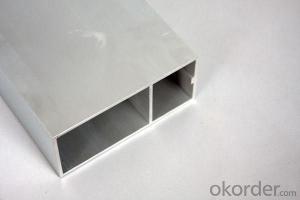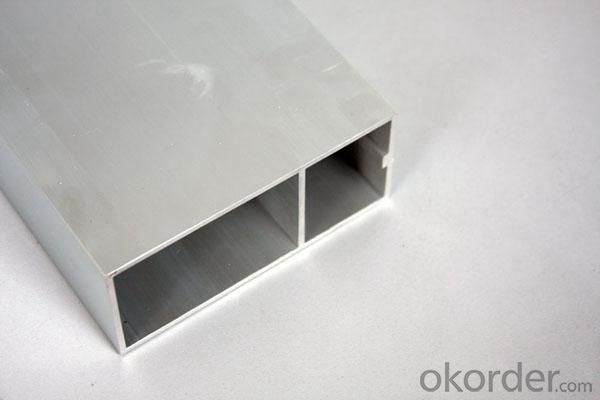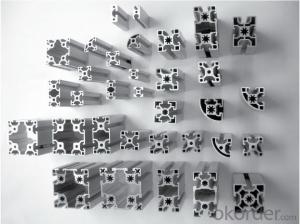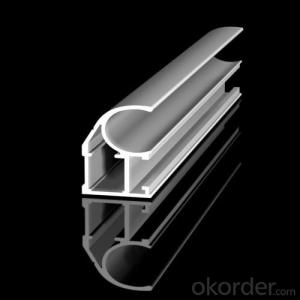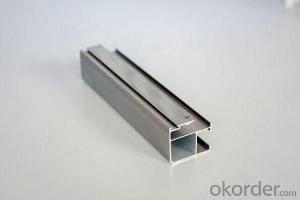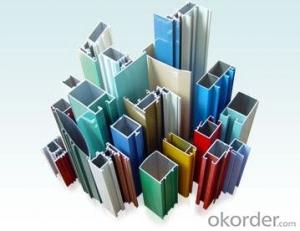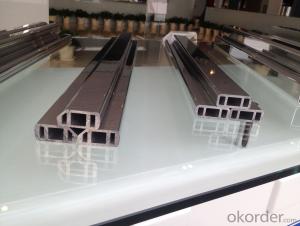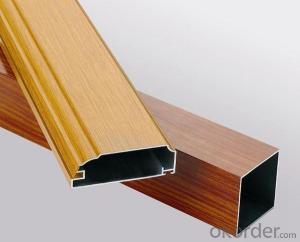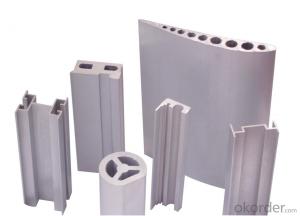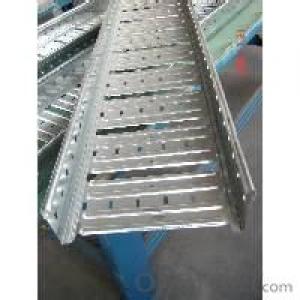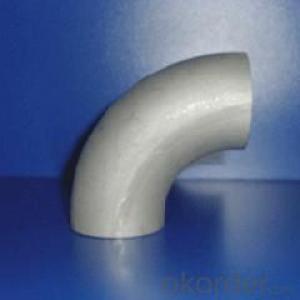Aluminum Extrusion Profiles F Channel 8080 for Equipment Framework Aluminum Profiles
- Loading Port:
- Shanghai
- Payment Terms:
- TT OR LC
- Min Order Qty:
- 5 m.t.
- Supply Capability:
- 1000 m.t./month
OKorder Service Pledge
OKorder Financial Service
You Might Also Like
Specification
1. Specification of Extruded Aluminium 8080 for Equipment Framework Aluminum Profiles
Alloy | State | Tensile Strength δbMpa | Non-proportional Stretching Stress(δp0.2Mpa) | Stretching rate (δ%) | Pattern Thickness (mm) | HV | HW |
No Less Than | |||||||
6061 | T4/T6 | 180/265 | 110/245 | 16/8 | - | - | - |
6063 | T5/T6 | 160/205 | 110/180 | 8/8 | 0.8/- | 58/- | 8/- |
6063A | T5/T6 | 200,190/230,220 | 160,150/190,180 | 5,5/5,4 | 0.8,0.8/-,- | 65,65/-,- | 10,10/-,- |
2. Application of Extruded Aluminium 8080 for Equipment Framework Aluminum Profiles
wall cladding, ceilings, bathrooms, kitchens and balconies, shutters, doors,windows…
3. Feature of Extruded Aluminium 8080 for Equipment Framework Aluminum Profiles
Surface Quality :
Be free from Oil Stain, Dent, Inclusion, Scratches, Stain, Oxide Decoration, Breaks, Corrosion, Roll Marks, Dirt Streaks and other defect which will interfere with use,
Mochenical Property:
Chemical Composite and Mechanical Property
4. Certificate:
SGS and ROHS(if client request, paid by client), MTC(plant provided), Certificate of Origin(FORM A, FORM E, CO), Bureau Veritas and SGS (if client request, paid by client), CIQS certificate
5. Image of Extruded Aluminium 8080 for Equipment Framework Aluminum Profiles
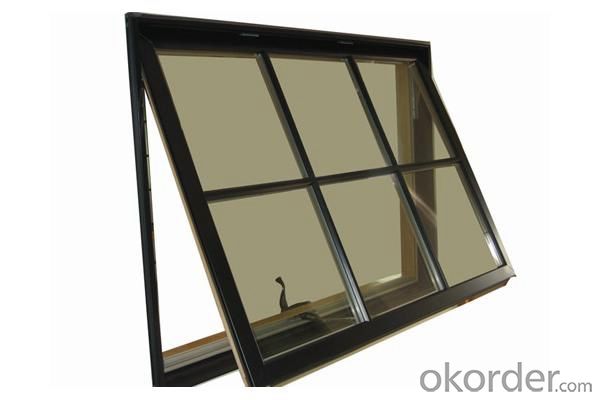
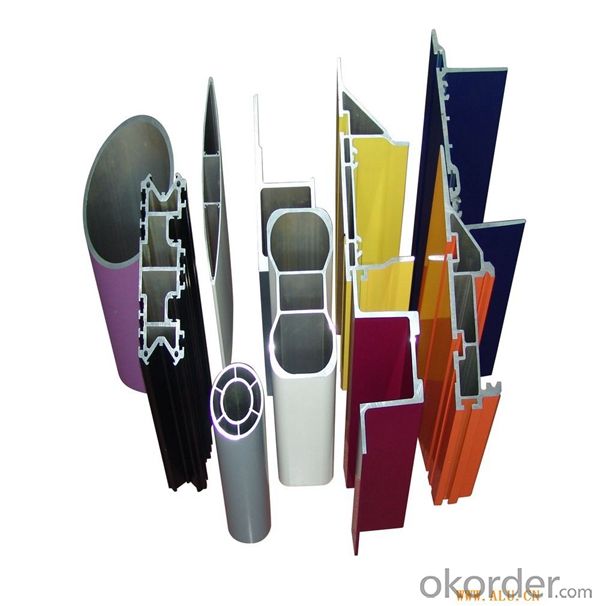
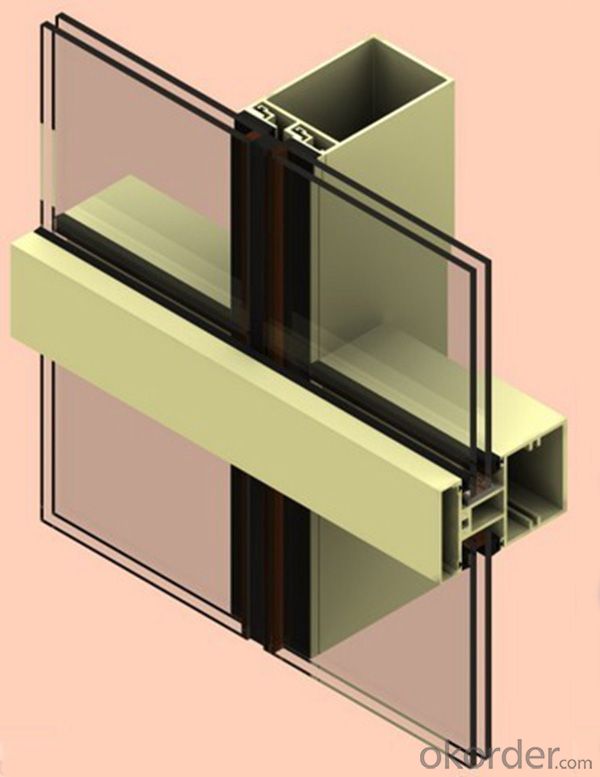
6. Package and shipping of Extruded Aluminium 8080 for Equipment Framework Aluminum Profiles
First, plastic cloth with drying agent inside; Second, Pearl Wool; Third, wooden cases with dry agent, fumigation wooden pallets, aluminum surface could cover blue PVC film
7. FAQ
Question 1: What is your MOQ?
We accept one ton per type for an order. But the detail we could negotiate.
Question 2: What is your normal terms of payment?
We always trade with you by T/T. But we also accept the L/C as you require.
Question 3: How many kinds of the surface treatment we can choose?
You could choose different color of powder coated. Anodized of black. matte silver, nature, champagne, bronze color. Mill finished. Wooden finished and printed.etc.
Question 4: Can you supply OEM services?
We offer OEM services for 17 years.
Question 5: How many days for opening the mould?
Normally about 10 days.According to the difficulty of your drawing.
Question 6: Can i choose the package what i want?
Yes, of course. We offer various kinds of package.e.g.PE foam. Shrink film. Wrapping paper.
But we would give you professional suggestion of package.
- Q: Are aluminum profiles suitable for fencing and gates?
- Yes, aluminum profiles are suitable for fencing and gates. Aluminum is a durable and lightweight material that offers excellent resistance to rust and corrosion. It can withstand harsh weather conditions and requires minimal maintenance. Additionally, aluminum profiles can be easily customized and designed to suit various fencing and gate styles while providing a sleek and modern appearance.
- Q: Are aluminum profiles suitable for use in the electronics industry?
- Yes, aluminum profiles are suitable for use in the electronics industry. Aluminum is lightweight, corrosion-resistant, and has excellent thermal conductivity, making it ideal for applications such as heat sinks, enclosures, and frames in electronic devices. Additionally, aluminum profiles can be easily customized and are cost-effective, making them a popular choice in the electronics industry.
- Q: Aluminum profiles 1, 2, 3, 4, 5, 7, 6, 8 line characteristics, what is the difference, please master more advice
- No, ah, who makes me enthusiastic?I can only say something about it1 system heat conduction, high conductivity, corrosion resistance, good weldability, generally applicable to electrical appliances, heat exchangers, plates, strips5 medium strength alloy, good formability, corrosion resistance, weldability, generally applicable to ships, vehicles, tubes, bars6 series can be very good, continuous extrusion, corrosion resistance, surface treatment is good, generally applicable to complex sections, hollow profiles, high-speed rail subwayThe alloy of 7 strength, welded structural alloy, solid profile alloy seems to be a shell case. Military companies have had this order beforeIt's too general. There are many alloys in each department
- Q: How do you calculate the weight-bearing capacity of aluminum profiles?
- To calculate the weight-bearing capacity of aluminum profiles, you need to consider various factors such as the dimensions of the profile, the material grade of aluminum used, and the specific application requirements. Firstly, determine the dimensions of the aluminum profile, including the length, width, and thickness. These measurements will help you calculate the cross-sectional area of the profile, which is a crucial parameter in determining its load-bearing capacity. Next, consider the material grade of aluminum used in the profile. Aluminum alloys have different strength properties, so it is essential to know the specific alloy and temper designation. This information can be obtained from the manufacturer or supplier. Once you have the cross-sectional area and material grade, you can refer to engineering standards or handbooks that provide load tables or formulas for calculating the safe load capacity of aluminum profiles. These resources usually provide a range of load ratings based on different loading conditions, such as static or dynamic loads, and factors like span length, support conditions, and safety factors. It is crucial to consider the specific application requirements and any additional factors that may affect the load-bearing capacity, such as temperature, vibration, or potential impact forces. These factors may require further adjustments to the calculated load capacity. Additionally, consulting with a structural engineer or an aluminum profile manufacturer can provide valuable insights and recommendations for calculating the weight-bearing capacity more accurately. They may have specialized knowledge or testing data specific to the aluminum profile in question, ensuring a more reliable calculation. Overall, calculating the weight-bearing capacity of aluminum profiles involves considering the dimensions, material grade, specific application requirements, and consulting relevant resources or experts in the field to ensure accurate and safe load calculations.
- Q: What screws do you use for aluminum alloy profiles?
- Thank you. I'd like to have a knob on the aluminum alloy window. The hammer set screws are not. How to solve?Chasing the answerOh, it's you first use the tools of playing on my profile should be used instead of electric drill, electric hammer. If you are home to install a few, then suggest the use of self drilling screws, directly hit it, is the nail head with the drill bit of that. The machine needs to be secured before it can be used. Tapping screw before installation to make a small, it could not only drilling, reaming.
- Q: What is the difference between aluminum profile and sheet metal?
- Aluminum extrusions can be produced by extrusion or casting. In contrast, the aluminum sheet is flat, mainly for all types of surface.
- Q: What are the industries that require aluminum profiles in industry?
- 1, transportation (including automobile manufacturing, rail transportation).2 equipment and machinery manufacturing.3) durable consumer goods (including light industries).4, transportation, equipment and machinery and equipment manufacturing, durable consumer goods industry, respectively, in China's aluminum profile applications accounted for about 10%, 10% and 12%. While in Europe, North America and Japan aluminum consumption structure, industrial consumption ratio reached 60%, 55% and 40%, much higher than in China. It is expected in the next 5~10 years, China's consumption of aluminum industry will continue to grow in the aluminum products in the proportion of about 30% up to 2015 about 45~50%.5, aluminum plating process, which belongs to the coating technology it is pre plating and electroplating process steps to increase on the basis of conventional Ti process, aluminum is the process of the aqueous solution of salt and hydrochloric acid in the plating after activation of chemical treatment; electroplating bath composition including sulfur acid nickel, nickel chloride, boric acid twelve, sodium lauryl sulfate, saccharin, brightener, this process has the advantages of simple, practical and good effect, the titanium aluminum prepared by the hardness of the film is HV 1500, under the same conditions than the 22 carat gold plating wear 150 times, can be processed into various forms, golden color, black and bright various series of aluminum products.
- Q: What are the different sizes and dimensions of aluminum profiles?
- The different sizes and dimensions of aluminum profiles can vary greatly depending on the specific application and manufacturer. They can range from small, narrow profiles with dimensions of a few millimeters to larger, wider profiles with dimensions of several inches or more. The length of the profiles can also vary, typically ranging from a few feet to several meters.
- Q: How are aluminum profiles insulated?
- Aluminum profiles are typically insulated using a thermal break system. This involves placing a non-conductive material, such as polyamide or polyurethane, between the inner and outer sections of the aluminum frame. This insulation helps to reduce heat transfer and improve energy efficiency in buildings.
- Q: Are there any special considerations for installing aluminum profiles?
- Yes, there are several special considerations for installing aluminum profiles. Firstly, it is important to ensure that the profiles are properly aligned and leveled during installation. This is crucial for achieving a seamless and professional-looking finished product. Using a laser level or a spirit level can help in this process. Secondly, it is essential to use the correct type and size of fasteners when installing aluminum profiles. Stainless steel or aluminum screws or rivets are commonly used, as they are resistant to corrosion and provide a secure hold. Additionally, it is important to pre-drill holes in the profiles to prevent cracking or splitting. Another consideration is the expansion and contraction of aluminum due to temperature changes. Aluminum has a high coefficient of thermal expansion, so it is necessary to leave enough space for the profiles to expand and contract without causing damage. This can be achieved by leaving a small gap between the profiles during installation. Furthermore, it is important to take into account the weight of the profiles and the load they will be subjected to. If the profiles are intended to support heavy loads or structural components, additional support or reinforcement may be required. Lastly, it is crucial to follow the manufacturer's instructions and guidelines for installation. Each type of aluminum profile may have specific requirements, such as recommended installation techniques or maximum spans between supports. Adhering to these guidelines will ensure a safe and secure installation. In conclusion, installing aluminum profiles requires careful attention to alignment, fasteners, expansion and contraction, load considerations, and following manufacturer's instructions. By considering these factors, one can ensure a successful and long-lasting installation.
Send your message to us
Aluminum Extrusion Profiles F Channel 8080 for Equipment Framework Aluminum Profiles
- Loading Port:
- Shanghai
- Payment Terms:
- TT OR LC
- Min Order Qty:
- 5 m.t.
- Supply Capability:
- 1000 m.t./month
OKorder Service Pledge
OKorder Financial Service
Similar products
Hot products
Hot Searches
Related keywords
